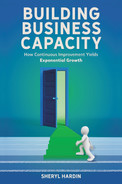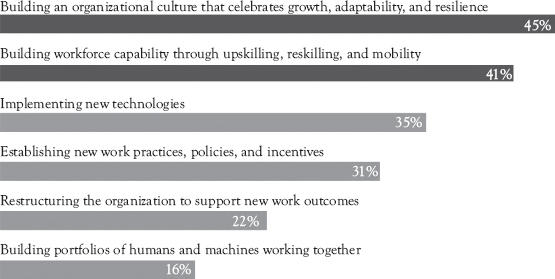Growing Capacity With Constant Improvement
Small businesses are a force in the United States providing 60.6 million people with jobs according to a 2020 Small Business Administration (SBA) study. The capacity of small businesses to grow directly impacts the capacity of the economy to grow. But what is capacity? When a group of executives were asked how to define capacity, Sales Director at VEM Tooling David Reid, responded, “The term ‘Capacity’ in the field of business can be defined as the facility or power to produce, perform, or deploy.” (Reid 2021) Simply put, capacity is the ability to increase sales and work volume by getting things done faster and/or better than before. When done correctly more work means more revenue.
Businesses that focus on building capacity by consistently improving systems supporting a better use of resources including people and technology become more effective and efficient. This supports good decision making, which in turn supports success. Regardless of whether your business is a three person operation or a 33,000 person enterprise, when each system supports all the other systems, the business grows capacity. The 2021 Deloitte Global Human Capital Trends survey (Figure 1.1) reported that “building workforce capability” was number two in a list of actions important to executives considering workforce transformations. The first was celebrating “growth, adaptability, and resilience” which are after all indicators of a business’s ability to grow capacity. (Deloitte Global Human Capital 2021).
Building capacity requires effort. It may take time before you see results. Consider these questions before committing:
• If you could do something that would likely make your business more valuable, would you do that?
Figure 1.1 Deloitte Global Human Capital Trends survey transforming work
Note: n=3,630 (executives)
• If you could build an organization from the ground up that is more likely to succeed, would you do that?
• What if you had to work for six months or a year to make your business 15 to 25 percent more valuable? Would that investment be worth your time?
What are the most important actions you are taking or will take to transform work?
Who, Why, What, How, and Where
It does not matter if you are considering starting a business, you are a current startup, or you have been in business for a long time. These questions open the door to examine or plan for the processes that make a business run efficiently and effectively. A solo entrepreneur needs to understand business as much as a company with a leadership team of an international company.
Try not to skip around as you read. Sometimes business owners and leaders find that the section they had the least interest in is the section where they need to do the most work. Lack of interest does not equate to lack of need.
There is a process that can be followed for everything. A business is an entity with a reputation or a reputation about to be built. Your journey begins by defining who your business is today. Who you work for is one of the first things you tell people when they ask what you do.
The journey continues by asking why. Why take on a new business or a new business opportunity? Why is the inspiration. Owning your own business requires a lot of energy. Building your business fraction by fraction, one opportunity at a time, requires dedication. Inspiration provides the energy to move toward the possibilities of the future. Inspiration carries you through to your end goal even when things get hard.
What you do is based on an opportunity to serve the needs of your customers. Carefully looking at how your current or your next opportunity serves those needs offers a more accurate vision for the future of your company. One that will lead you to success in a shorter timeframe.
How you get where you want to go with your business is the single biggest factor in how long it takes you to reach success. Have you ever looked at your competitors and wondered why they are more or maybe even less successful than you? It very often comes down to how they do what they do. When you think past survival and begin concentrating on long-term growth and new business opportunities you build the capacity for success. Your goals become clearer.
As you expand capacity, you must reconsider where you do business. The more you understand your business, the better prepared you are to determine where you should operate in the future. Are you best served by a virtual workforce, single or multiple locations, brick and mortar stores, and/or an online storefront? Is there a combination of choices that works best for you? Where becomes more obvious.

